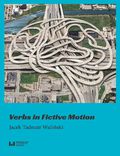- Tytuł:
- Verbs in Fictive Motion
- Autorzy:
- Jacek Tadeusz Waliński
- Data publikacji:
- 2019-01-14
- Wydawca:
- Wydawnictwo Uniwersytetu Łódzkiego
- ISBN, ISSN:
- 9788381423830
- Opis fizyczny:
- 278 s.
- Słowa kluczowe:
-
Języki obce
Angielski
motion in language
fictive motion in language
cognitive linguistic models
British National Corpus - Dostawca treści:
- ebookpoint BIBLIO
- eBook
Menu główne
Wyszukiwarka
Treść główna

